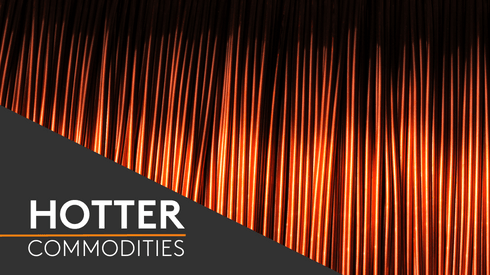- Chinese lithium prices decrease amid weak demand and buyer caution
- East Asian lithium prices decline on Chinese weakness, muted demand
- Europe, US spot lithium prices edge lower following Asian market declines
Market participants noted that the weakness in the domestic Chinese lithium market became more apparent after China’s Dragon Boat holiday (June 22-24), while spot demand remained lukewarm.
Chinese cathode makers were heard to be purchasing spot units only on a hand-to-mouth basis over the past week amid insufficient order books and a lack of a clear picture for the near-term demand outlook.
“The rebound of lithium prices in May was due to consumer restocking. Now the restocking has finished and the real consumer demand is limited, which explains the current weak demand for spot lithium carbonate,” a Chinese cathode producer said.
In addition, market participants were unsure of the near-term lithium demand. Several lithium consumers told Fastmarkets that they would play it by ear and only secure spot materials according to the order books they receive.
“It’s uncertain how the demand is in July and we are afraid to purchase spot materials more than we need, in case the current weak dynamics will persist,” a second Chinese cathode producer said.
Several other market participants were also concerned about the lithium supply in the second half of the year, which further discouraged consumers to build up their stocks since it should bring more downward pressure to the market.
Markets participants noted some traders were among the first to lower their lithium carbonate offer prices in fear of any further price decreases, a move that also added to the price weakness over the past week.
Fastmarkets’ assessment of lithium carbonate 99.5% Li2CO3 min, battery grade, spot price range exw domestic China was 288,000-310,000 yuan ($39,791-42,830) per tonne on Thursday, down by 15,000-22,000 yuan per tonne from two weeks earlier.
Fastmarkets did not publish spot lithium prices in China’s domestic market on June 22 due to the country’s public holiday.
The Chinese lithium hydroxide market remained similarly quiet, and spot demand for the material was muted due to weakness in the nickel cobalt manganese battery sector.
Fastmarkets’ assessment of lithium hydroxide monohydrate LiOH.H2O 56.5% LiOH min, battery grade, spot price range exw domestic China was 280,000-300,000 yuan per tonne on Thursday, down by 20,000 yuan per tonne from two weeks earlier.
East Asian market follows Chinese downtrend
Lithium prices in the East Asian market also trended downward over the past week, mostly under pressure by declining domestic Chinese lithium prices.
“As domestic Chinese lithium hydroxide prices are falling, our Korean customer insist on lower lithium hydroxide prices,” a Chinese lithium trader said.
A Chinese lithium producer echoed a similar view of the lithium carbonate market.
The spot lithium market was quiet over the past week, however, and multiple lithium producer sources told Fastmarkets they barely received any inquiries or even heard any of activity in the spot market.
“I feel that the spot demand for lithium hydroxide is very weak, and I heard some consumers are even cutting down on the volumes from their long-term supply,” a second Chinese lithium producer said.
In addition, the recent depreciation of the Chinese yuan against the US dollar also contributed to the weakening East Asian lithium prices, with China being the biggest lithium supplier to the East Asian market.
“Although the depreciated Chinese yuan is not a major factor in the weakening lithium prices, it still plays a role, especially amid the weak spot demand and falling domestic Chinese prices,” the first Chinese producer said.
The exchange rate rose to 7.24 yuan to $1 on Thursday, from 7.18 yuan to $1 on Monday, according to currency converter Oanda.com.
But some other market participants were positive on the mid- to long-term demand, citing that some East Asian battery producers are planning higher production in the second half of the year, which should support the demand for lithium hydroxide and its prices.
Fastmarkets’ daily assessment of lithium hydroxide monohydrate LiOH.H2O 56.5% LiOH min, battery grade, spot price cif China, Japan & Korea was $44-48 per kg on Thursday, narrowing downward by $2 per kg from $44-50 per kg a day earlier, and narrowing downward by $3 per kg from $44-51 per kg the week prior.
Fastmarkets’ daily assessment of lithium carbonate 99.5% Li2CO3 min, battery grade, spot prices cif China, Japan & Korea was $40-44 per kg on Thursday, flat from a day earlier, and down by $1 per kg from $41-45 per kg a week earlier.
Europe, US spot lithium prices edge lower tracking Asian market amid tepid demand appetite
Europe, US lithium spot prices edged lower in the week to Thursday, with sources citing weakness filtering through Asia’s more liquid markets and limited inquiries.
Fastmarkets last assessed the price of lithium carbonate 99% Li2CO3 min, technical and industrial grades, spot price ddp Europe and US at $40-44 per kg on Thursday, down 2.33% week on week.
Fastmarkets last assessed the price of lithium hydroxide monohydrate LiOH.H2O 56.5% LiOH min, technical and industrial grades, spot price ddp Europe and US at $44-48 per kg on the same day, down 7.07% week on week.
A distributor said that there is a steady flow of inquiries from Europe, but for small tonnages, and some end consumers only mean to test the market because they expect further declines before finalizing any sales.
A second distributor noted that the lithium hydroxide market remains structurally tight and will record less declines than the carbonate equivalent in Europe and the US. This is because of the unavailability of Russia-sourced material, as well as expensive Chinese imports due to duties and competition from Asian markets such as Japan and South Korea.
Keep up to date with all the news, insights and the volatile lithium price with the Fastmarkets NewGen lithium long-term forecast.





